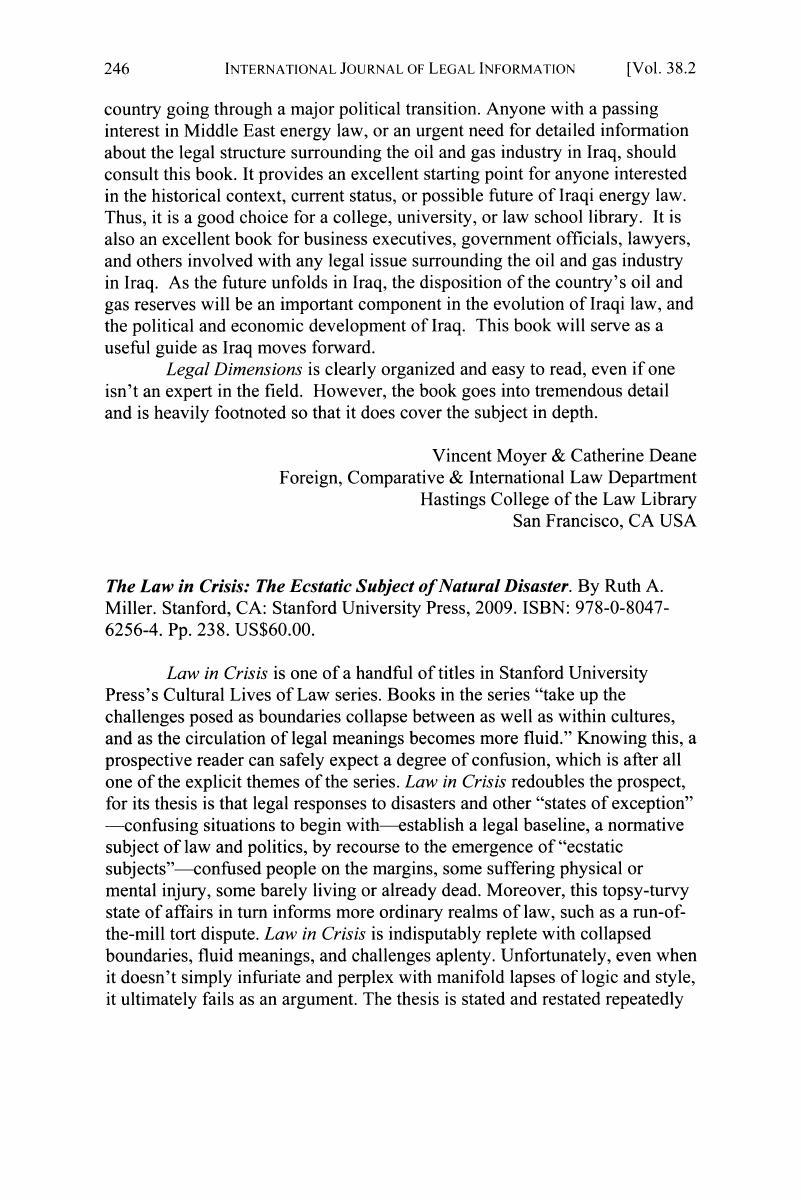No CrossRef data available.
Published online by Cambridge University Press: 28 February 2019

4 211 N.Y. 125 (1914).Google Scholar
5 Quoting James Russell Wislon, San Francisco's Horror of Earthquake and Fire (New York: G.W. Bertron, 1906) 194.Google Scholar
6 Quoting Georges Bataille, Tears of Eros (San Francisco: City Light Books, 1989) 109–10.Google Scholar
7 Purportedly quoting Noah Webster, “A Brief History of Epidemic and Pestilential Diseases,” 3 The Medical Repository of Original Essays and Intelligence (1800) 278, 283. It bears mentioning that the publication to which Miller cites was not composed by Webster. It is, rather, a review in a medical journal of a book published by Webster in 1799. Miller attributes to Webster a blockquote reproduced on p.74 of Law in Crisis, but these are the words of the unidentified reviewer. Later, the reviewer reproduces a long excerpt of Webster's own words, some of which Miller also quotes and attributes to Webster (e.g., the reference to “considerable plague”).Google Scholar
8 Quoting Webster [sic], p.283.Google Scholar
9 Miller fails to mention that the second sentence following the reference to “considerable plague” in Webster's text excerpted in the review reads, “It does not happen that every place where pestilence prevails is shaken; but during the progress of the diseases which I denominate pestilence, and which run, in certain periods, over large portions of the globe, some parts of the earth, and especially those which abound most with subterranean fire, are violently agitated.” (Webster [sic], P. 283) Nor does she point out the reviewer's own concluding remarks respecting Webster's analysis:Google Scholar
We have no hesitation to admit, that the frequent coincidence of these great phenomena, as stated by Mr. Webster, is a most interesting fact in the order of nature. Enough has been observed to stimulate inquiry to the utmost; and it is to be hoped, that incessant attention will be directed to this object, until our discoveries concerning it become more satisfactory and complete. We may, however, be permitted to remark, that it is requisite to know much more of nature before we can hope to ascertain the precise degree of connection or dependence of these occurrences upon one another; whether they stand in the relation of cause and effect, or whether they may all be considered as effects of a common cause. (Webster [sic], P. 287)Google Scholar
Is it unfair to suggest that Miller's scholarship here is at best sloppy?Google Scholar
10 “There may be cases where a patient ought not to be advised of a contemplated operation until shortly before the appointed hour. To discuss such a subject at midnight might cause needless and even harmful agitation. About such matters a nurse is not qualified to judge. She is drilled to habits of strict obedience. She is accustomed to rely unquestioningly upon the judgment of her superiors. No woman occupying such a position would reasonably infer from the plaintiff's words that it was the purpose of the surgeons to operate whether the plaintiff forbade it or not.” Schloendorff, 211 N.Y. at 134.Google Scholar